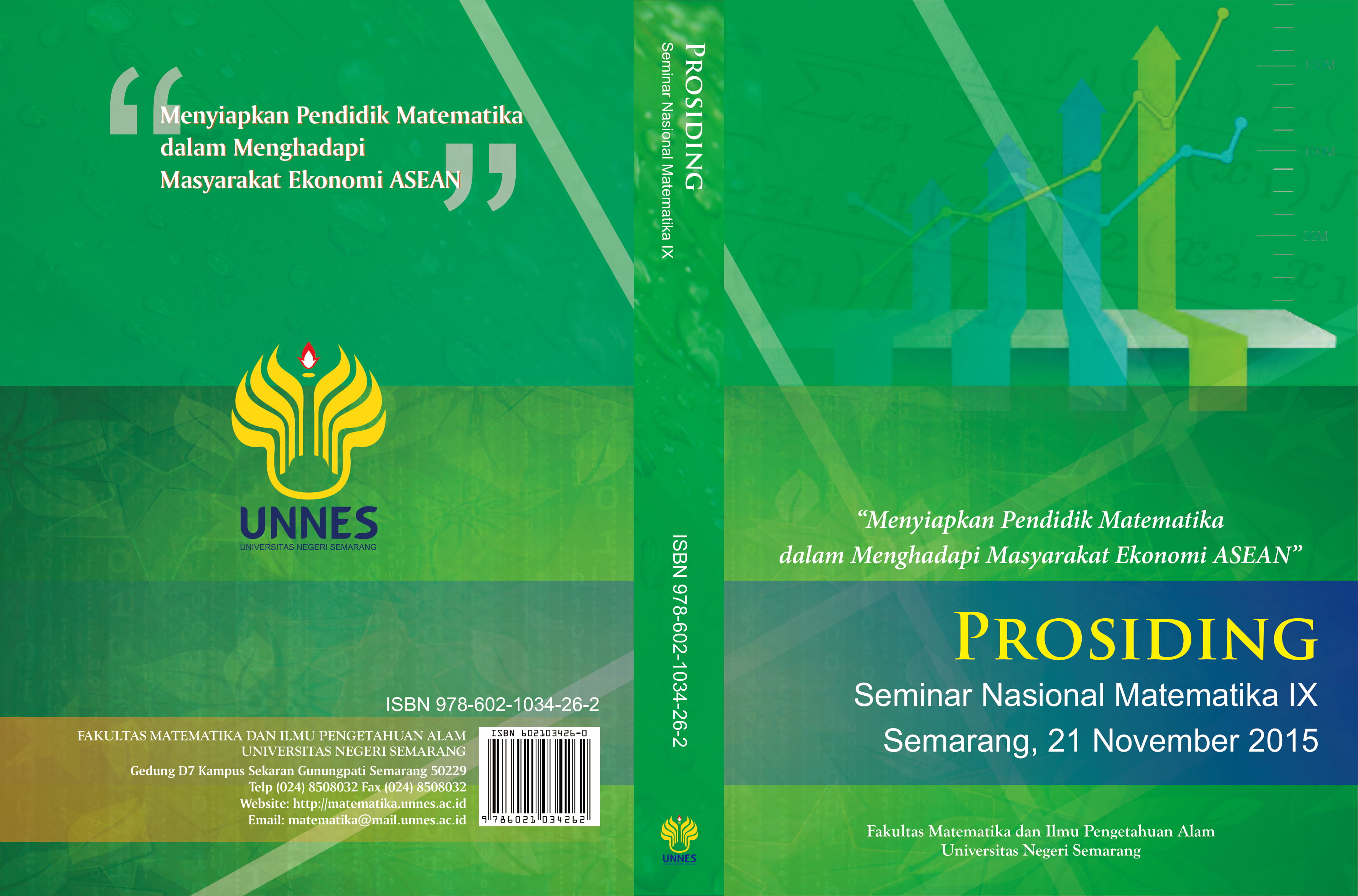Cooperatif Learning pada Kecemasan Matematika
Main Article Content
Abstract
Pembelajaran kooperatif adalah suatu strategi belajar mengajar yang menekankan pada sikap atau perilaku bersama dalam bekerja atau membantu di antara sesama dalam struktur kerjasama yang teratur dalam kelompok, yang terdiri dari dua orang atau lebih. Pembelajaran kooperatif adalah salah satu bentuk pembelajaran yang berdasarkan faham konstruktivis. Pembelajaran kooperatif merupakan strategi belajar dengan sejumlah siswa sebagai anggota kelompok kecil yang tingkat kemampuannya berbeda. Dalam menyelesaikan tugas kelompoknya, setiap siswa anggota kelompok harus saling bekerjasama dan saling membantu untuk memahami materi pelajaran. Dalam pembelajaran kooperatif, belajar dikatakan belum selesai jika salah satu teman dalam kelompok belum menguasai bahan pelajaran.Strategi ini berlandaskan pada teori belajar Vygotsky yang menekankan pada interaksi sosial sebagai sebuah mekanisme untuk mendukung perkembangan kognitif. Matematika yang dianggap momok bagi siswa dapat menumbuhkan kecemasan saat siswa berhadapan dengannya. Berdasarkan teori kontruktuvisme ini, Cooperatif learning dapat juga dipandang sebagai suatu strategi pembelajaran. Bagaimana suatu strategi pembelajaran berpengaruh pada kecemasan matematika. Pada makalah ini akan dipaparkan bagaimana cooperatif learning dalam pembelajaran, Manfaat cooperatif learning dalam pembelajaran, Bagaimana cara mencegah Kecemasan Matematika dan temuan atau hasil penelitian yang berkaitan dengan cooperatif learning.
Article Details
References
[4]Beilock, S.L., & Carr, T.H. (2005). When High-Powered People Fail: Working Memory and “Choking Under Pressure†in Math. Psychological Science, 16(2), 101-105.
[6]Brown, T. (n.d.). Problem Solving Strategies: Their Impact on Reducing Math Anxiety in Low- Achieving Students. Bagwell College of Education, Kennesaw State University, Kennesaw, GA. Retrieved from (http://bcoe.kennesaw.edu/tbrown/grad/Math Anxiety in Students.pdf.diakses 5 november 2015)
[4]Cavanaugh, S. (2007). Understanding ‘Math Anxiety.’ Education Week, February 21, 2007. Retrieved from (http://www.edweek.org,5 november 2015)
[4]Cohen E (1986). Designing group work-strategies for the heterogeneous classroom. New York: Teachers College Press.
[6]Curtain-Phillips, M. (2001). The Causes and Prevention of Math Anxiety. Retrieved from (http://www.mathgoodies.com/articles/math_anxiety.html,5 november 2015)
[4]Davidson N (1989). Cooperative learning in mathematics: A handbook for teachers. Reading, MA: Addison and Wesley.
[4]Dehghan Shadkami, M. (2009). The Effects of Cooperative Learning on the Progress and Self-Respect of girl students, Tehran guidance schools. MS Thesis, Islamic Azad University, Science and Research branch.
[4]Devries DL, Slavin R (1978). Team-games tournaments: A reserve paper. J. Res. And Development in Educ. 12: 28 -38.
[4]Furner, J.M., & Berman, B.T. (2003). Math Anxiety: Overcoming a Major Obstacle to the Improvement of Student Math Performance. Childhood Education, 79(3), 170-175.
[4]Furner, J.M., & Berman, B.T. (2004). Confidence in Their Ability to Do Mathematics: The Need to Eradicate Math Anxiety so our Future Students Can Successfully Compete in a High-TechGlobally Competitive World. Philosophy of Mathematics Education Journal, 18(1), 1-33.
[6]Geist, E. (2010). The Anti-Anxiety Curriculum: Combating Math Anxiety in the Classroom. Journal of Instructional Psychology, 37(1).Retrieved from (http://www.faqs.org/periodicals/201003/ 2011820081.html,5 nov 2015)
[4]Gillies, R. (2002). The residual effects of cooperative learning experiences: A two year Follow-up. The J. Educ. Res. 96(1): 15-20.
[6]Haralson, K. (2002). Math Anxiety: Myth or Monster? Presentation at National Council of Teachersof Mathematics Central Regional Conference, Paducah, KY, October 2002. Retrieved from (http://apbrwww5.apsu.edu/haralsonk/ppt/anxiety presentation.ppt.5 nov 2015)
[11]Hellum-Alexander, A. (2010). Effective Teaching Strategies for Alleviating Math Anxiety andIncreasing Self-Efficacy in Secondary Students. Master’s Thesis, The Evergreen State College,Olympia,WA.Retrievedfrom(http://archives.evergreen.edu/masterstheses/Accession89-10MIT/Hellum-Alexander_AMIT2010.pdf. 5 nov 2015)
[5]Johnson, D.W. and R.T. Johnson, 1990. Using Cooperative Learning in Math. In: Cooperative Learning in Mathematics, Davidson. N. (Ed.). Addison-Wesley, ISBN: 0-201-23299-5, pp: 122.
[4]Kagan, S. (2004). KooperatÃv tanulás. [Cooperative Learning]. Budapest: Onkonet.
[9]Legg, A.M., & Locker, L. (2009). Math Performance and its Relationship to Math Anxiety and Metacognition. North American Journal of Psychology, 11(3). Retrieved from (http://findarticles.com/p/articles/mi_6894/is_3_11/ai_n42379449/?tag=rel.res2,5 nov 2015)
[3]Millis, B.(2010). Cooperative learning in high education: Across the disciplines, across the academy. Sterling, VA : Stylus Publishing.
[6]Plaisance, D.V. (2009). A Teacher’s Quick Guide to Understanding Mathematics Anxiety. Louisiana Association of Teachers of Mathematics Journal, 6(1). Retrieved from (http://www.lamath.org/ journal/vol6no1/anxiety_guide.pdf, 5 nov 2015)
[4]Reid J (1992). The effects of cooperative learning with intergroup competition on the math achievement of seventh grade students. (ERIC Document Reproduction Service No ED 355106).
[3]Ruseffendi, H. E. T. (2001). Pengantar kepada Membantu Guru Mengembangkan Kompetensinya dalam Pengajaran Matematika untuk Meningkatkan CBSA. Bandung: Tarsito.
[4]Ross J (1995). Impact of explanation seeking on students’ achievement and attitudes. The J. Educ. Res. 89:109-117.
[4]Suinn RM (1988). The measurement of Mathematics anxiety: The Mathematics anxiety rating scale for adolescents - MARS-A. J.Clin. Psychol. 38:576-580
[4]Slavin R (1990). Cooperative learning. Boston: Allyn and Bacon.
[4]Slameto (2013), Utilizing ICT to Improve Influential Cooperative Learning toward Student’sAchievement in Satya Wacana Christian University Salatiga, International Journal of e-Education, e-Business, e-Management and e-Learning, 3(4):330-332.
[4]Sparks, S.D. (2011). Researchers Probe Causes of Math Anxiety. Education Week, 30(31).Retrieved from http://www.edweek.org.
[3]Wahyudin. (2010). Monograf: Kecemasan Matematika. Bandung: Program Studi Pendidikan Matematika SPS UPI.
[4]Whicker K, Nunnery J, Bol L (1997). Cooperative learning in the secondary mathematics classroom. The J. Educ. Res. 91:42 -48
[5]Woodard, T. (2004). The Effects of Math Anxiety on Post-Secondary Development Students as Related to Achievement, Gender, and Age. Inquiry, 9(1). ERIC Document Reproduction Service No. EJ876845.
